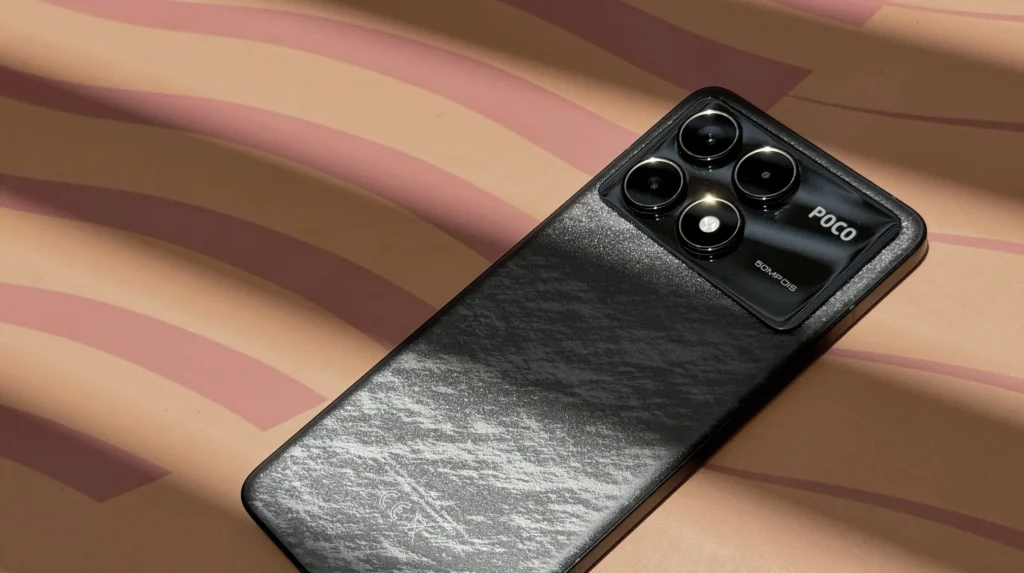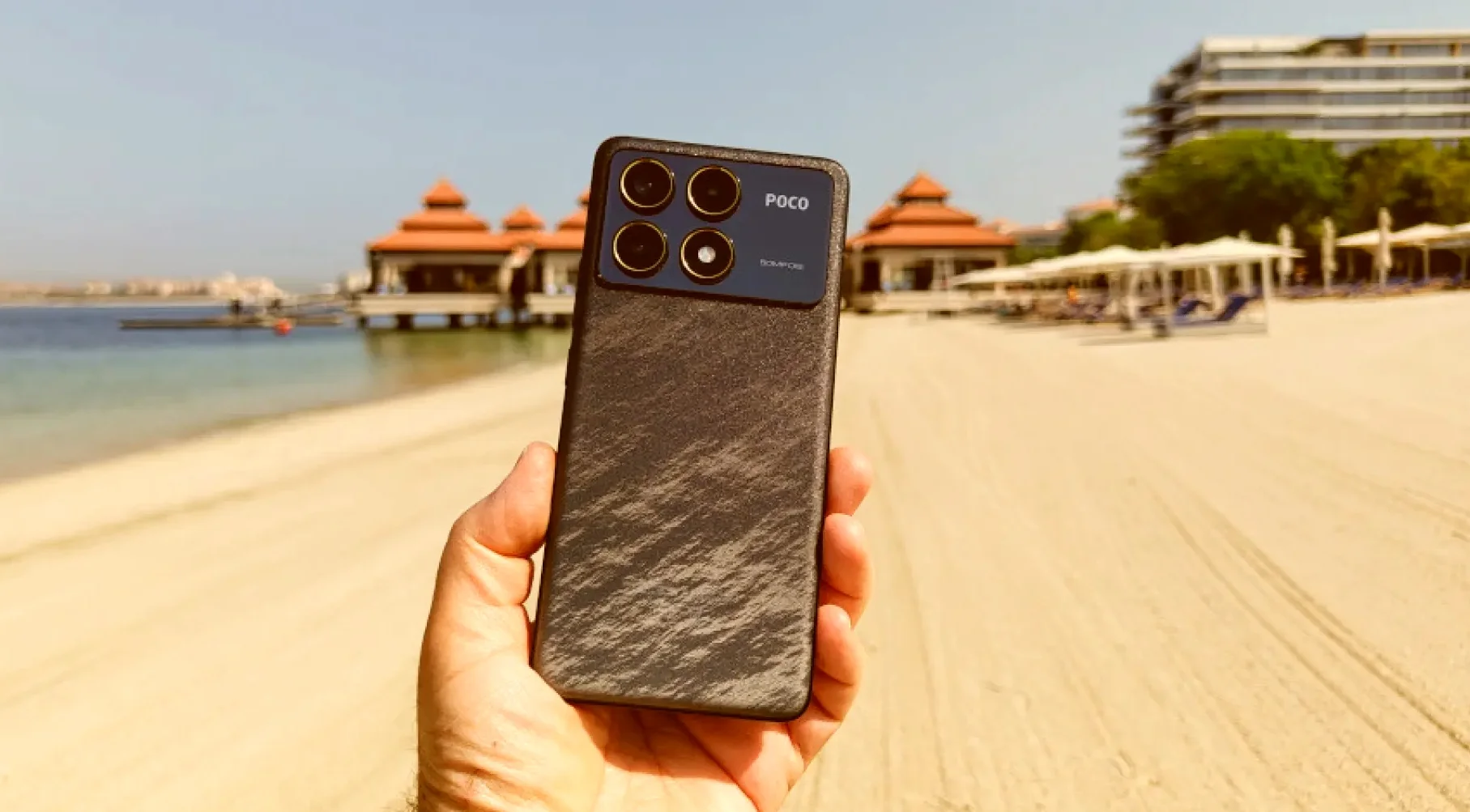The POCO F6 Pro is a mobile phone that is suitable for everything and everyone, with great battery life, a main camera, and performance at the limit of the $500 price range.
POCO continues to be one of those brands that has managed to position itself as a key player in the mid-range mobile phone market. The brand itself, through its spokespersons, confirms that this is where POCO feels most comfortable, its goal being to offer mobile phones with good quality and performance, even if high-end specifications are not its forte.
And that’s how we could describe this new POCO F6 Pro, recently unveiled in Dubai alongside the POCO F6 and POCO Pad.
I’ve been using this POCO F6 Pro as my main phone for two weeks, with all my daily apps, normal use where I always repeat apps and uses, such as heavy use of the camera, social media apps, some casual games, and more demanding ones.
Although I am a high-end mobile phone user, “downgrading” to a mid-range phone is no longer a problem today because, despite the fact that the POCO F6 Pro uses a two-year-old processor, the performance is perfect for everyday use. Few people could say that this Snapdragon 8 Gen 2 is not suitable for their needs.
Here is my review and opinion of the POCO F6 Pro, which has been on an international trip, survived a couple of accidental drops, and, above all, been put through its paces in gaming, one of the categories where the brand also wants to be strong.
POCO has come up with a good design, but there is only one “good” color

The design of the POCO F6 Pro—and I would dare to say not only this one, but some previous models as well—is starting to show signs of fatigue. Although POCO remains tied to Xiaomi’s designs, as this POCO F6 Pro is actually a Redmi with a different name, the camera module and overall design are starting to look tired.
How does POCO manage to give it a touch that sets it apart from the rest? Well, with something that’s on trend, an effect on the back that I would personally describe as stone, but POCO refers to as “moon.”
On the back, we find the camera module with four cameras. Four? No, actually you have three cameras, and the third circle hides the LED flash, next to the POCO branding.
In the hand, it’s a phone with a good weight, without being too light, but above all without being heavy. The metal on the back makes it easy to grip, and the straight lines of the metal frame make it perfect for people like me who have butterfingers.
It has the volume buttons and power button on the right side, an infrared sensor at the top, a SIM card tray, and a USB-C connection at the bottom.
What you do need to know is that even if you’re one of those people who prefers dark or black phones, take my word for it, the white color looks much better in your hand. But of course, if you’re going to keep it in a case all the time, the color becomes secondary.
One “Pro” feature that the POCO F6 Pro has is connectivity. From 5G, NFC, GPS and, more importantly, support for Wi-Fi 7 and Bluetooth 5.3. It’s not bad at all for a $580 phone to have Wi-Fi 7, even if you almost have to spend the same amount on a compatible router.
Physically, you only have one USB-C port; the headphone jack is now a thing of the past.
A 120 Hz “ultra-hyper-mega-bright” AMOLED screen
Not all AMOLED panels are the same, and POCO has opted for one that, while meeting the requirements for good image quality, high color contrast, and a very high brightness level (more on that later), isn’t the best screen experience I’ve had in my hands.
It achieves a resolution of 3,200 x 1,440 pixels with a refresh rate of 120 Hz.
Where this screen gets interesting is in its brightness. The normal brightness is 700 nits, reaching 1,200 nits outdoors or with the setting at maximum. But for some reason, the screen can reach a peak of 4,000 nits. Of course, this is only for a limited period of time because otherwise you can say goodbye to your battery.
It has good sound quality, but as expected, it’s not for listening to music, but for making hands-free calls.
When playing voices at high volume, even at maximum, the quality is good and perfectly understandable. Music is another matter. Although it’s not suitable for audiophiles, you can listen to music decently at high volume, but forget about good quality—the music just plays. The good news is that it doesn’t rumble or distort much.
It has a two-year-old processor that’s still going strong.

I said at the beginning of this review that despite having a two-year-old processor, a Snapdragon 8 Gen 2, you don’t notice two-year-old performance like you did a while ago. The new processors have taken a leap forward, yes, but many of those improvements have been limited to the NPUs for artificial intelligence.
In favor of the Snapdragon 8 Gen 2, it works very well and has 12 GB of base RAM, which helps a lot for any task to run quickly and smoothly.
These are the performance tests that applications such as Geekbench run on this combination of Snapdragon 8 Gen 2 and 12 GB of RAM.
There’s nothing your phone can’t do, not even all the apps you have installed or games like Genshin Impact. It’s not a gaming phone, and although POCO mentioned performance improvements and image optimization for games during its presentation, the reality is that games run smoothly on a day-to-day basis.
This performance is helped by the cooling plate system, which, without going into technical details that are irrelevant here, disperses heat rather than concentrating it in a single point (the processor), allowing it to maintain its performance for longer.
A HyperOS customized by POCO and with the promise of AI
The good thing about POCO is that it uses HyperOS, Xiaomi’s operating system, which, apart from some very light customization with POCO branding, is pretty much the same as what you find on a Xiaomi or Redmi.
Of course, we have the big problem with Xiaomi phones: the number of pre-installed apps that nobody likes, but which are there due to commercial agreements. This bloatware isn’t even liked by those responsible for POCO, but it’s part of the deal to keep the price as low as possible: advertising.
Where we enter tricky territory is with the promise of artificial intelligence tools that POCO showed off at its Dubai presentation. Tools such as creating images of people based on other photos, or retouching, such as enhancing the background of an image with generative artificial intelligence.
Promises that, according to POCO, are in development and will arrive in the future. When? No one knows, so we’re not even counting it as a feature in its favor.
A reliable main camera, but no “wow” effect

The POCO F6 Pro is a mid-range phone, and its camera is the best you can find in a phone in this range. It takes good photos, but not the kind of quality that makes you say “wow” like phones costing $800, $900, or more than $1,000 can.
These are the cameras featured on the POCO F6 Pro.
50-megapixel f/1.6 wide-angle main sensor
8-megapixel f/2.2 ultra-wide angle
2-megapixel macro
16-megapixel front camera
The 50-megapixel main camera performs well, more than acceptable even in night photography. In good lighting conditions, you can achieve good levels of detail to a certain extent, as well as good color contrast.
It’s not a mediocre camera, it’s a decent camera, which is much more than can be said for other phones in its category. No frills or special effects. A camera you can rely on for everyday use, whether it’s family photos, photos with friends, or snapshots.
The night photography really caught my attention. For a decent daytime camera, it performs very well at night, although it will depend a lot on what you’re photographing and how much residual light there is. A photograph in a city with great artificial lighting is great, but without that support, you start to notice its limitations.
Selfies are fine, but you can tell that it’s either Xiaomi’s algorithm or the processor’s limitations. It has trouble detecting the edges of glasses or those strands of hair that stick out from the head, and then suddenly it focuses.
It doesn’t have a bad portrait effect, but you can definitely tell how much it has improved in this area in a couple of years.
Video recording supports 4K at 60 FPS, and for some reason, you can even record in 8K at 24 FPS. Don’t even try it, or you’ll use up your memory in a couple of videos, even when recording in high-efficiency format.
A large-capacity battery aided by HyperOS and a 120W charger

The POCO F6 Pro’s battery capacity is 5,000 mAh and, as we’ve seen since the arrival of HyperOS, an operating system based on Android 14, which is lighter than previous versions and manages power consumption much better.
The autonomy of the POCO F6 Pro is one of its strengths, and we have to thank HyperOS for that, but also the large battery and a processor that doesn’t demand as much as current versions, which also play in its favor.
As I always say in all my reviews, battery performance is impossible to measure in a standardized way because each person is different. My normal use is not your normal use, but on my phone I have WhatsApp, Telegram, Slack, social media such as Instagram, Threads, Reddit, YouTube, Spotify/YouTube Music.
It would have to be a very tough day, where you don’t touch a Wi-Fi network and have the screen on for many hours, for you not to reach the end of the day with more than 40% battery life.
What I didn’t expect is that POCO would include a 120W charger or a compatible charger in the box. This insane charging speed allows you to charge your phone from 0% to 100% in half an hour.
In my tests, I went from 2% battery to 100% in just 28 minutes. Without changing any settings, just using the official charger. The downside is that, as it’s such a powerful charger, it’s quite large, but it saves you more than once when you think you’re going to run out of power.
The POCO F6 Pro is one of the best phones you can buy in 2025.
The POCO F6 Pro is a well-balanced phone for all audiences and fans of great value for money.
For the $499.99 price tag for the 12 GB RAM and 256 GB storage version, we didn’t find many similar phones. There are some, but POCO maintains its brand reputation with powerful, well-priced phones that have made it famous.
It’s the perfect smartphone for anyone who wants to spend just under $600 on a powerful phone but can’t stretch their budget a little further to get a high-end model. It’s a recommended purchase, and when the price drops in a sale, it will be even more so.




